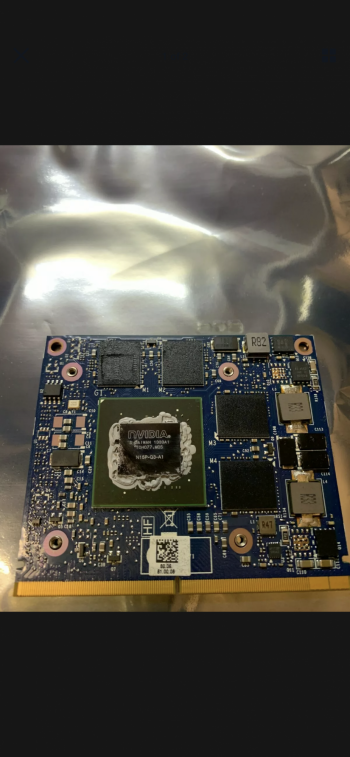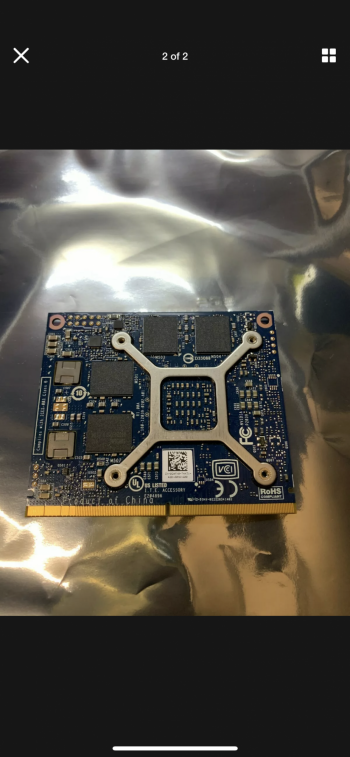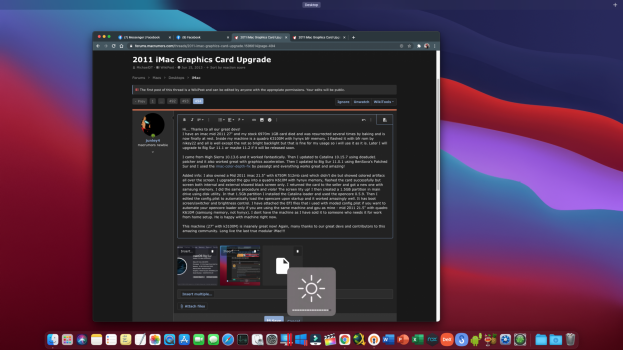Q0: What is the single - important - need to be done in advance prerequisite?
Backup your iMacs firmware using
@dosdude1 program named romtool (link on first post)!
Q1: How to install the image on an SD/USB?
Installation on an SD card or USB flash drive is simple: Use the disk utility to restore the card/drive from the image you downloaded and unpacked before. The Catalina Loader is now an empty stack. It will need to have an EFI folder you get from the additional packages (currently 0.6.4). Make sure that partitions of the card have been deactivated.
Q2: Where to find these config files you are talking about?
You will find the config files on the image in the EFI/OC folder. Please check my
previous post for more a documentation and more detailed info.
Q3: How to use a specific config file provided here?
Delete the existing config.plist file, make a copy of your target file and rename this to config.plist. Do a PRAM reset on reboot and choose the Catalina Loader either on boot with alt/option or using the system preferences and the start object selection (AMD GOP BIOS users):
Q4: How to use the different versions of OC EFI folders?
First download the additional archive, unzip it and move the folder named EFI directly onto the Catalina Loader image (picture attached). PRAM reset!
Q5: Why separate only an EFI folder and no complete Catalina Loader image?
6 times the space needed and 10 times the time needed for me to maintain and upload such a new image.
Q6: So I really need the SD/USB card all the time?
Yes, there is no way around booting OpenCore to get the enhancements wanted. Users of NVIDIA cards or EG modded AMD BIOS may install the EFI folder into the EFI partition if their boot drive. Users of AMD GOP BIOS versions not having a native boot picker should stick with the external SD/USB version. If things to wild changing the config you can always just plug the USB/SD. Otherwise you will need to reopen your iMac to force a boot selection by plugging HD cables. Not a real option, right?
Q7: Will my iMac Late 2009 or iMac Mid 2010 boot Big Sur using this?
Yes, using the OC 0.6.4 and the config files for BS will install and run Big Sur. For an unknown reason you will have to use a special config.BSINSTALL.plist only while installing (grey screen). After installing you should change the config file according to your GPU (NVIDIA or AMD). Choose the file and rename it to config.plist to make it active on the next reboot.
Q8: Where is PolarisBoostMAX?
@Pascal Baillargeau released a new version of the stock PolarisBoost. It has the same features and is save to use with the WX7100, too.
Q9: How can I get Windows 10 UEFI sound back on my iMac Mid 2011 (model 12,x)?
Open the config.plist you currently use and go to the ACPI section and enable the fitting DSDT patch.
Q10: I cannot make the CL the start object! How to solve this?
Just have a single Catalina Loader installed on your iMac and eject and remount the image once. The mount point needs to be
/Volumes/Catalina Loader - use
mount or
diskutil list to check this.
Q11: I cannot select the CL image in Big Sur (not included in selection)?
Boot another older macOS version and select it there. Known (currently unsolved) issue. if you have an EFI Boot screen select the Catalina Loader pressing the CRTL key - this makes it the default boot partitions, too.
Q12: Cannot use this with High Sierra, what to do?
Use the 0.5.9 folder - the functionality is the same. Somewhere on the road a fork has been used to make newer version not booting into High Sierra.
Q13: Where are the Big Sur files in the 0.6.3 version gone?
I pulled them back to make sure you are using the 0.6.4 and newer - this is the Big Sur version of OpenCore.
Q14: Can I just using the Apple OTA upgrades visible within the system preferences?
Dangerous game: Although there are heavy efforts made to block unwanted firmware upgrades to your (old) iMac it may come through creating a nice big brick on your real desktop. Only possible in theory with 0.6.4 (as of now) and even there complicated. The the internal disks EFI folder for firmware upgrades and delete them. If you do not know what I am writing about forget the idea to use Apple OTA upgrades now.
Q15: How to decrypt the encrypted Catalina Loader image file attached here in advance?
Just download the image and use this command in terminal
hdiutil convert -format ULMO -o CL.dmg Catalina\ Loader.dmg. You will be asked for your password and the encryption password, too. The decrypted file is named CL.dmg
Q16: How to enable Windows 10 sound support with ÙEFI installations on iMac 2011?
Please download a proper configurations tool and an XML editor and enable within the ACPI section the DSDT patches. Only enable the proper version for your iMac model - system will not boot if you hit the wrong one.
Q17: Why is the image file encrypted at all?
Google marked this file as "dangerous" and so all modern browsers block the download. The only solution is to encrypt the file making int impossible for google robot analysis to look into the file and inspect it. Be patient while decrypting the file using Apple disk utility!






